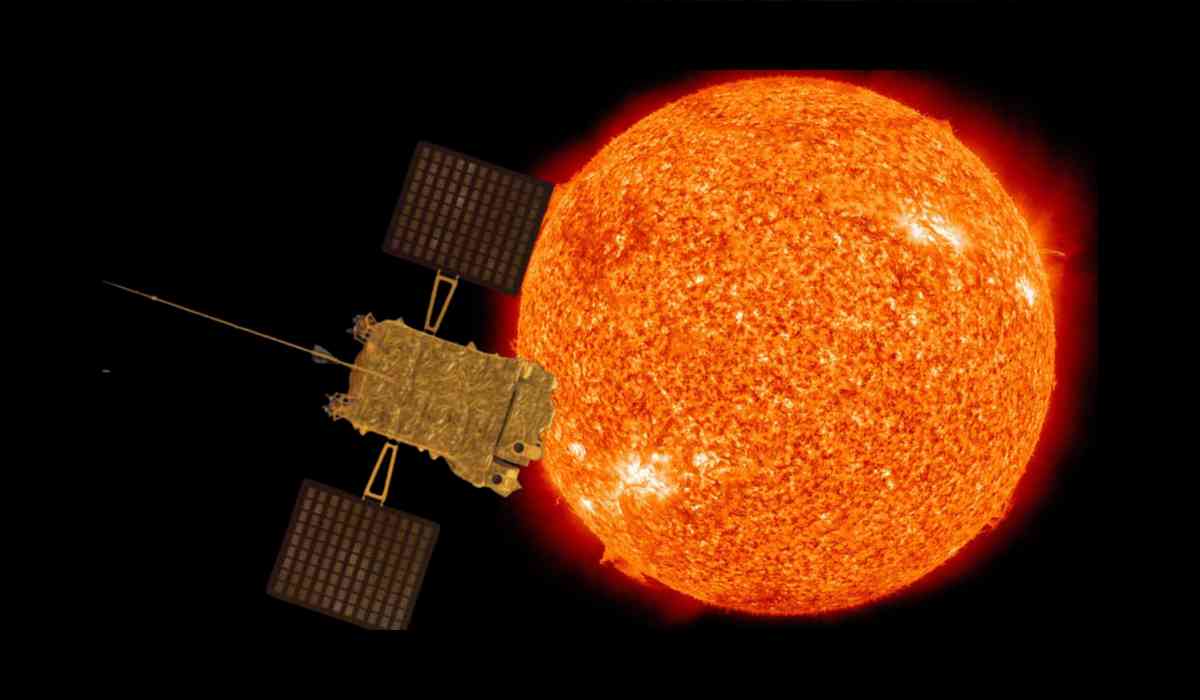In a historic stride, the Indian Space Research Organisation (ISRO) has unveiled groundbreaking full-disk images of the Sun, captured in near-ultraviolet wavelengths. These mesmerizing images, a feat of the Aditya-L1 spacecraft, offer an unprecedented peek into the fiery celestial body.
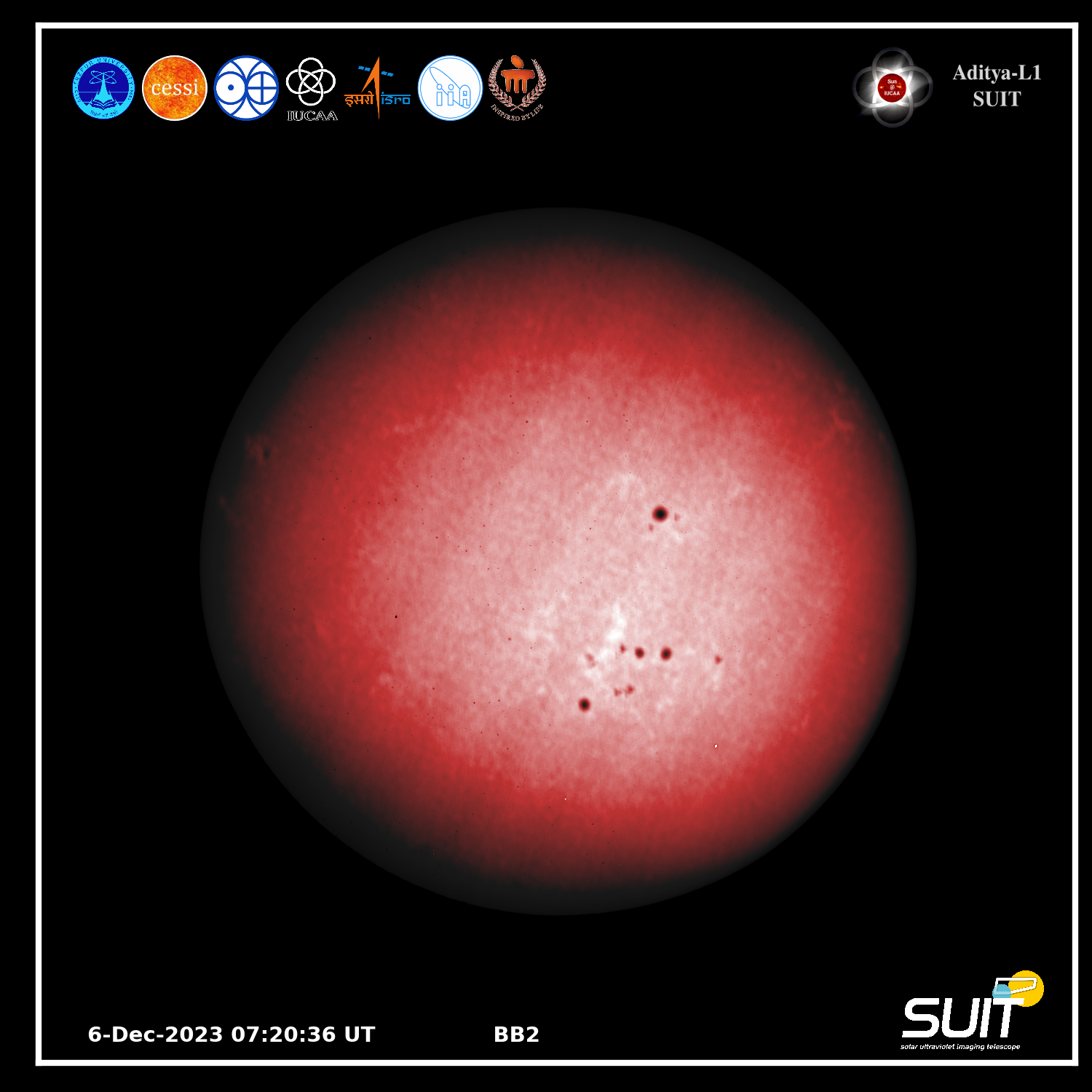
Image Source: ISRO
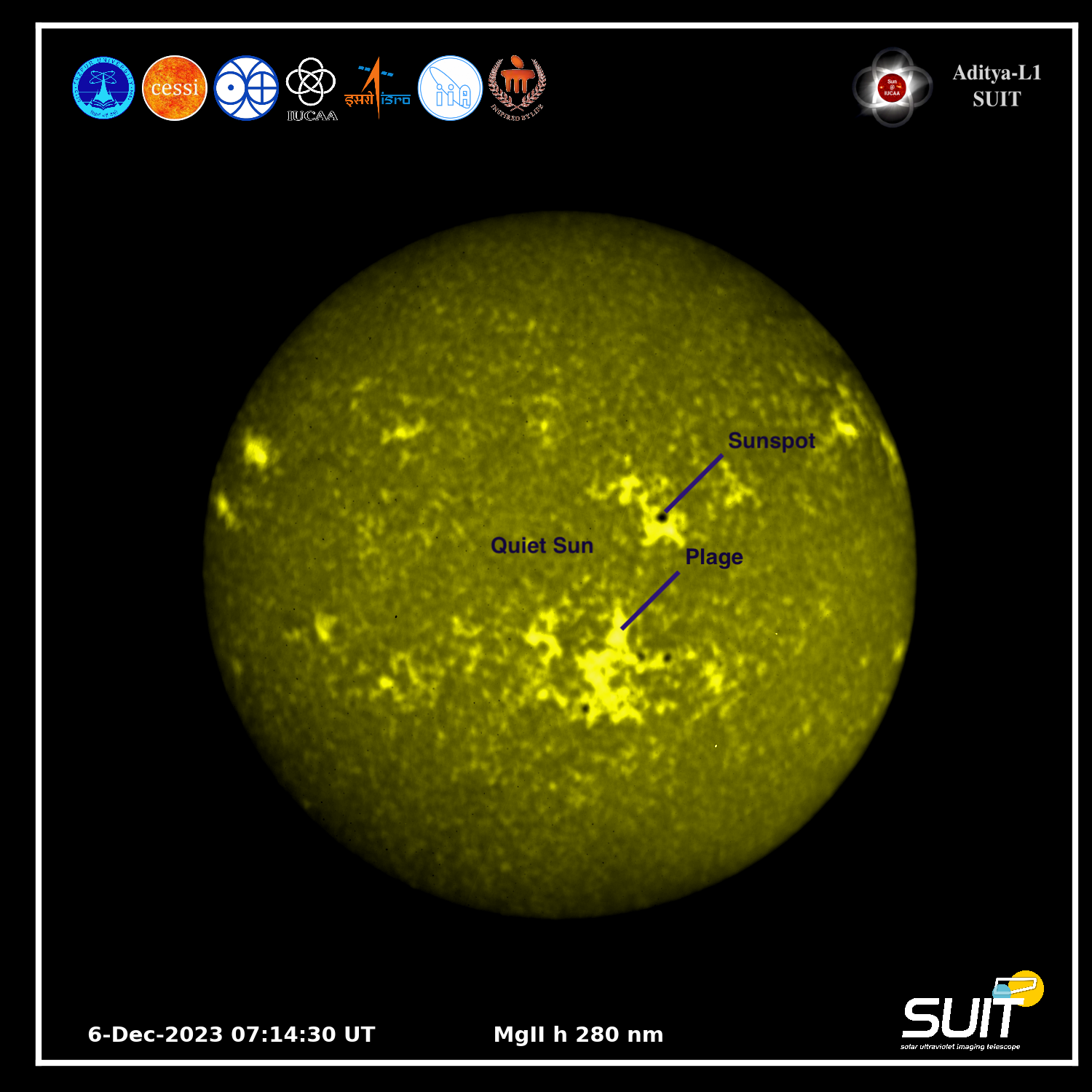
Image Source: ISRO
Marking a significant breakthrough, these visuals were skillfully captured by the Solar Ultraviolet Imaging Telescope (SUIT) instrument, a key component aboard the Aditya-L1 spacecraft. Utilizing 11 distinctive filters spanning wavelengths from 200 to 400 nm, these images shed light on the captivating features of the Sun.
Image Source: ISRO
| Name of the filter (emission lines) | Wavelength (nm) | Features |
|---|---|---|
| NB1 | 214 | Photosphere, Sunspot, Plages and limb darkening |
| NB2 | 276 | Photosphere, Sunspot, Plages, limb darkening |
| NB3 (Mg II k) | 279 | Chromosphere, Sunspots, Plages, Quiet Sun, filaments |
| NB4 (Mg II h) | 280 | Chromosphere, Sunspots, Plages, Quiet Sun, filaments |
| NB5 | 283 | Photosphere, Sunspot, Plages, limb darkening |
| NB6 | 300 | Photosphere, Sunspot, Plages, limb darkening |
| NB7 | 388 | Photosphere, Sunspot, limb darkening |
| NB8 (Ca II h) | 396.8 | Chromosphere, Sunspots, Plages, Quiet Sun, |
| BB1 | 200-242 | Photosphere, limb darkening, Plages, Sunspots |
| BB2 | 242-300 | Photosphere, limb darkening, Plages, Sunspots |
| BB3 | 320-360 | Photosphere, limb darkening, Sunspot |
Source: ISRO
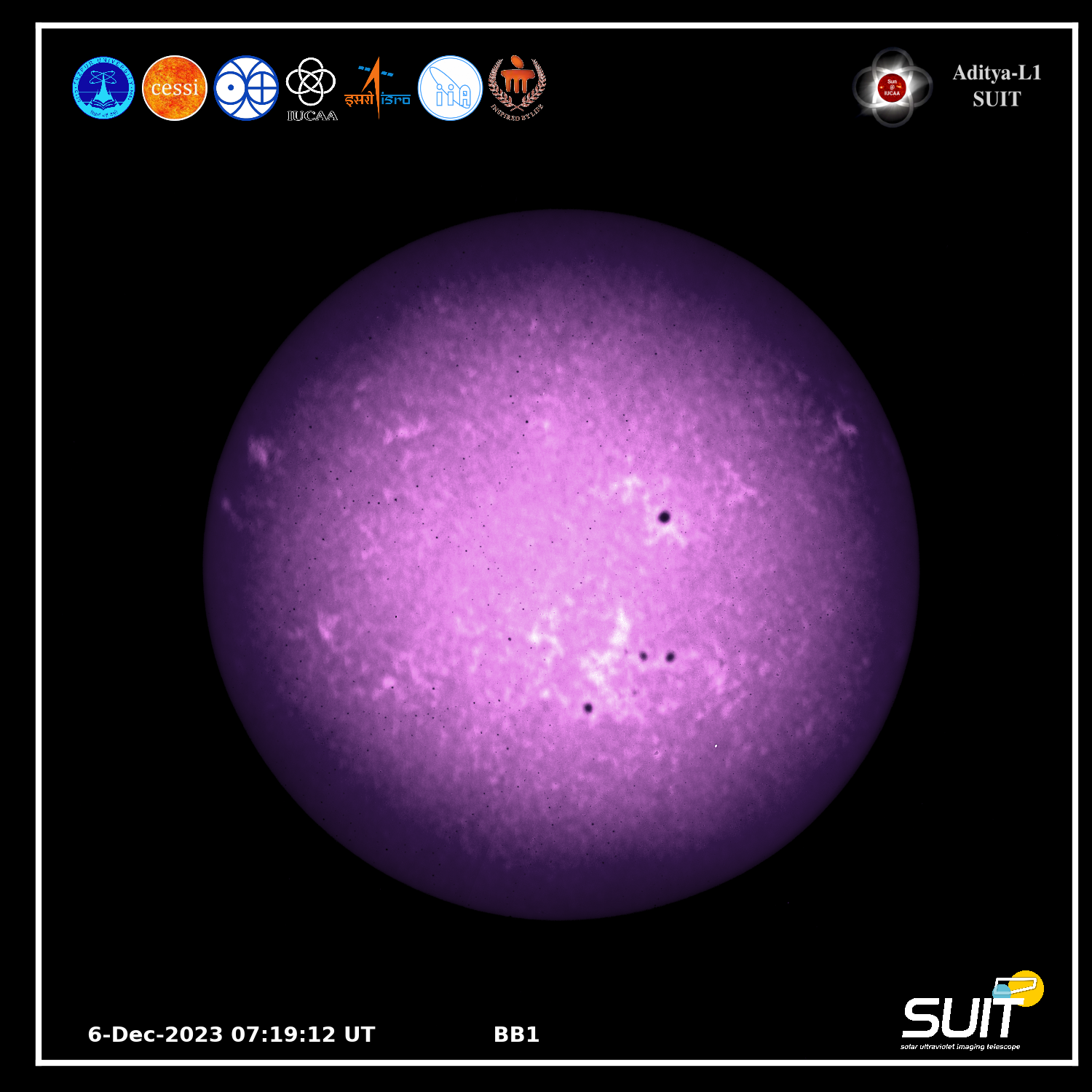
Image Source: ISRO
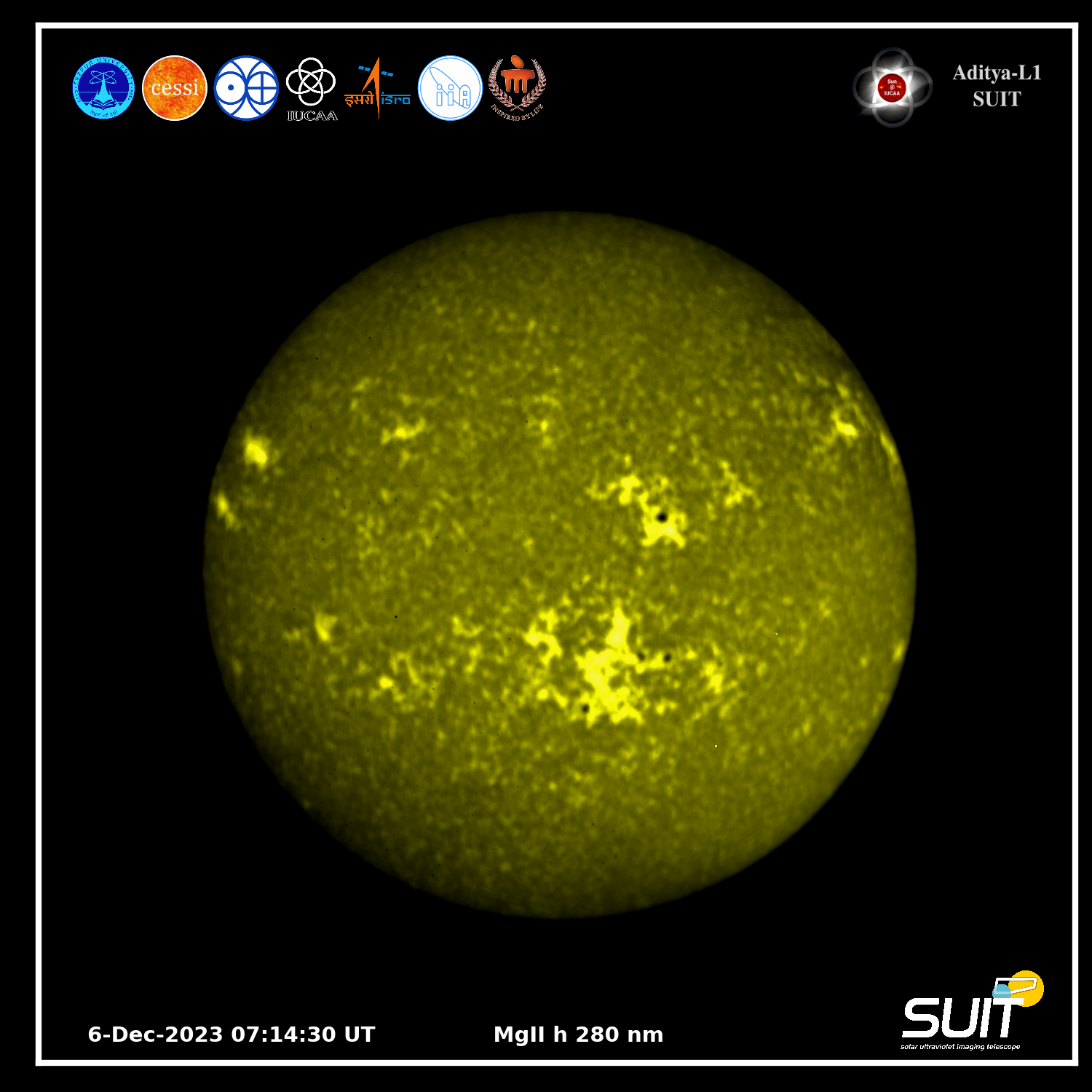
Image Source: ISRO
Unveiling the Solar Secrets
Highlighting remarkable characteristics such as sunspots, plage, and serene Sun regions, these images narrate a compelling story of the Sun’s dynamic existence. The enigmatic sunspots, appearing dark due to their relatively cooler temperature (albeit still searing at around 6,500 F), hold a captivating secret. Despite their shadowy appearance, these spots possess the capability to emit potent coronal mass ejections (CMEs), potential harbingers of geomagnetic storms with the capacity to impact Earth significantly.
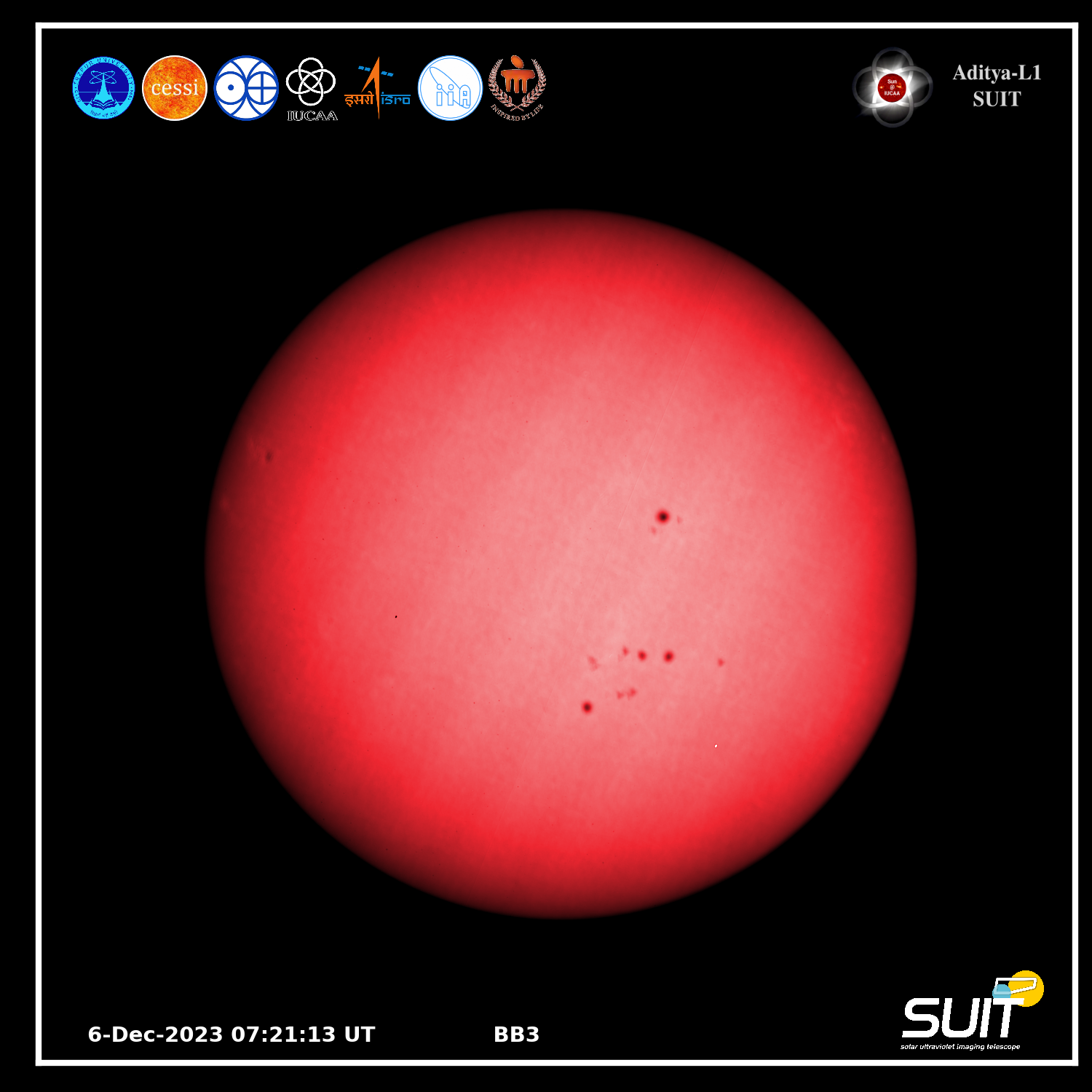
Image Source: ISRO
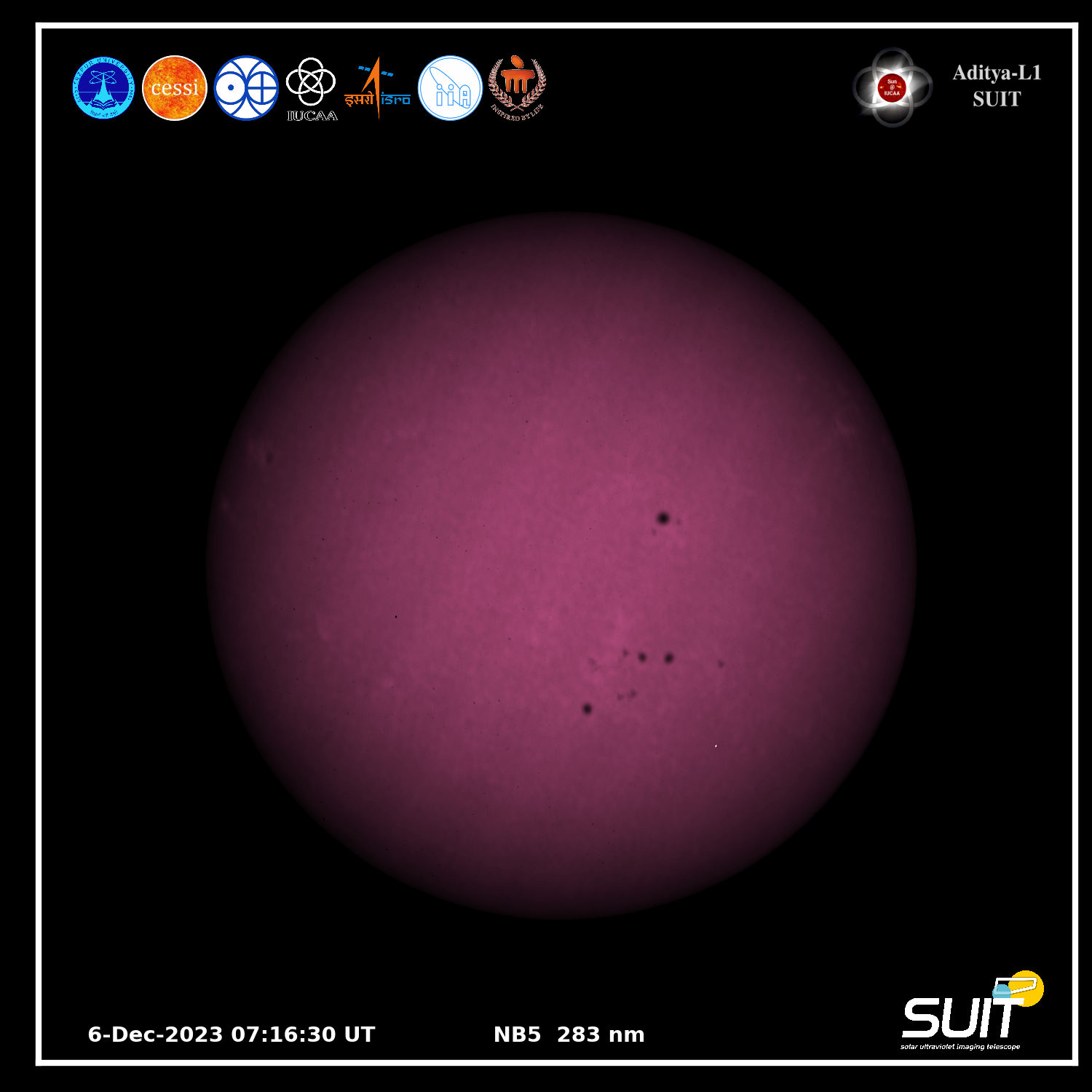
Image Source: ISRO
The SUIT instrument stands as a testament to ingenuity, being one of seven payloads meticulously crafted and housed within the Aditya-L1 spacecraft. This cutting-edge technology was brought to fruition by a collaborative effort involving 50 scientists, researchers, and astrophysics enthusiasts at the Inter-University Centre for Astronomy and Astrophysics (IUCAA) in Pune.
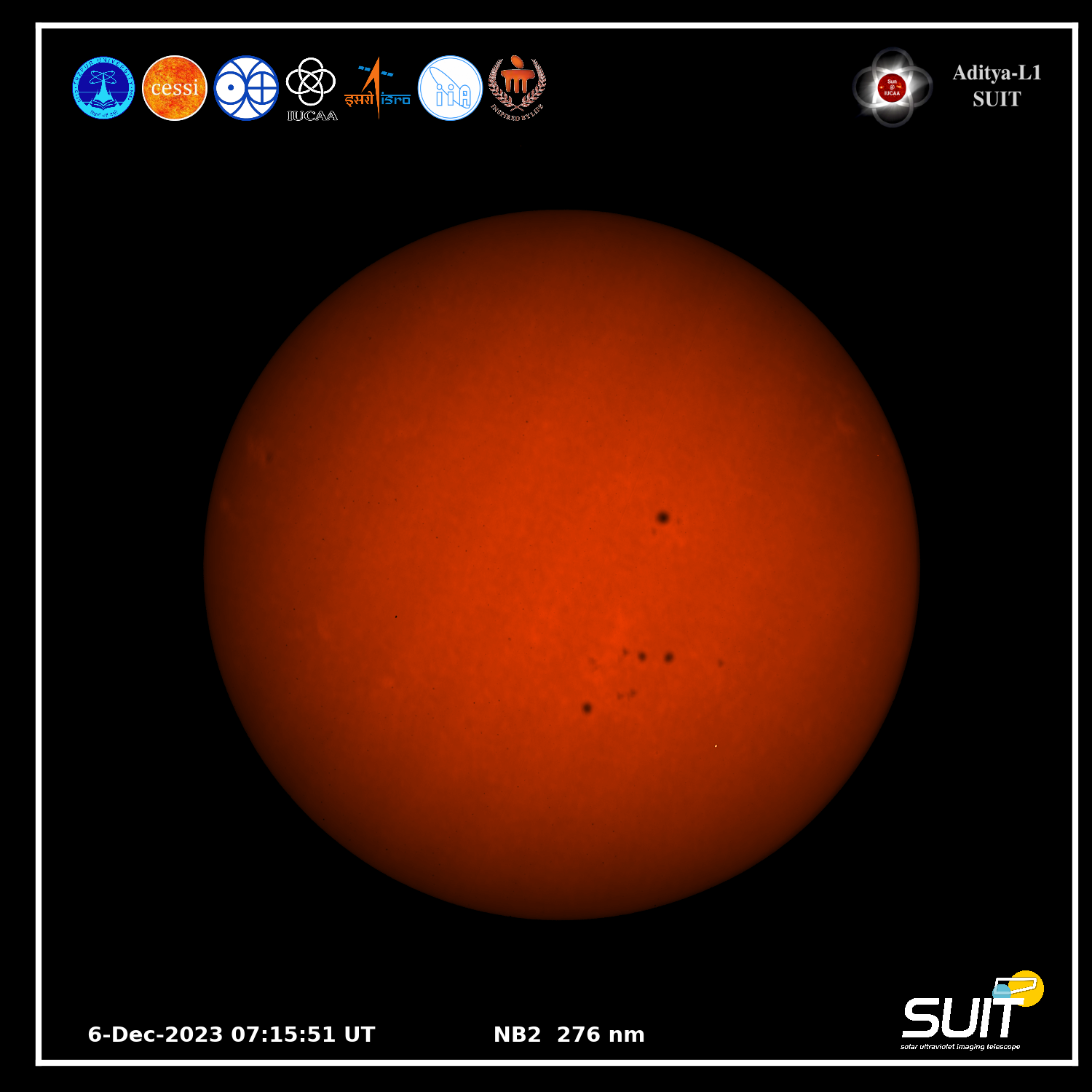
Image Source: ISRO
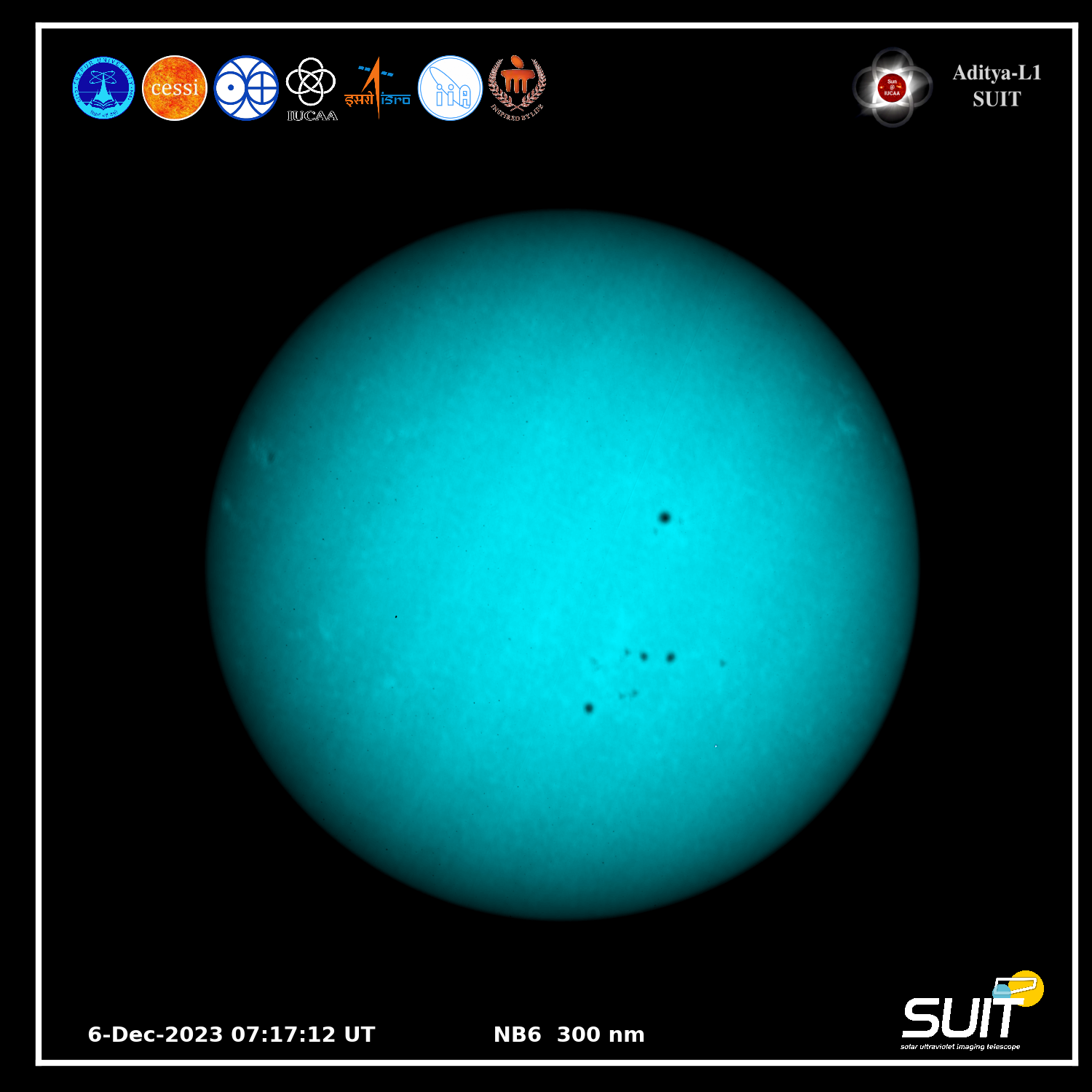
Image Source: ISRO
Aditya-L1’s Mission: A Glimpse into Our Star
Embarking on its inaugural sun mission on September 2 from the Satish Dhawan Space Centre (SDSC) in Sriharikota, the Aditya-L1 spacecraft proudly boasts seven indigenous scientific payloads curated by ISRO and multiple national research laboratories. Notably, apart from the IUCAA, significant contributions have been made by the researchers at the Indian Institute of Astrophysics (IIA) in developing these payloads.
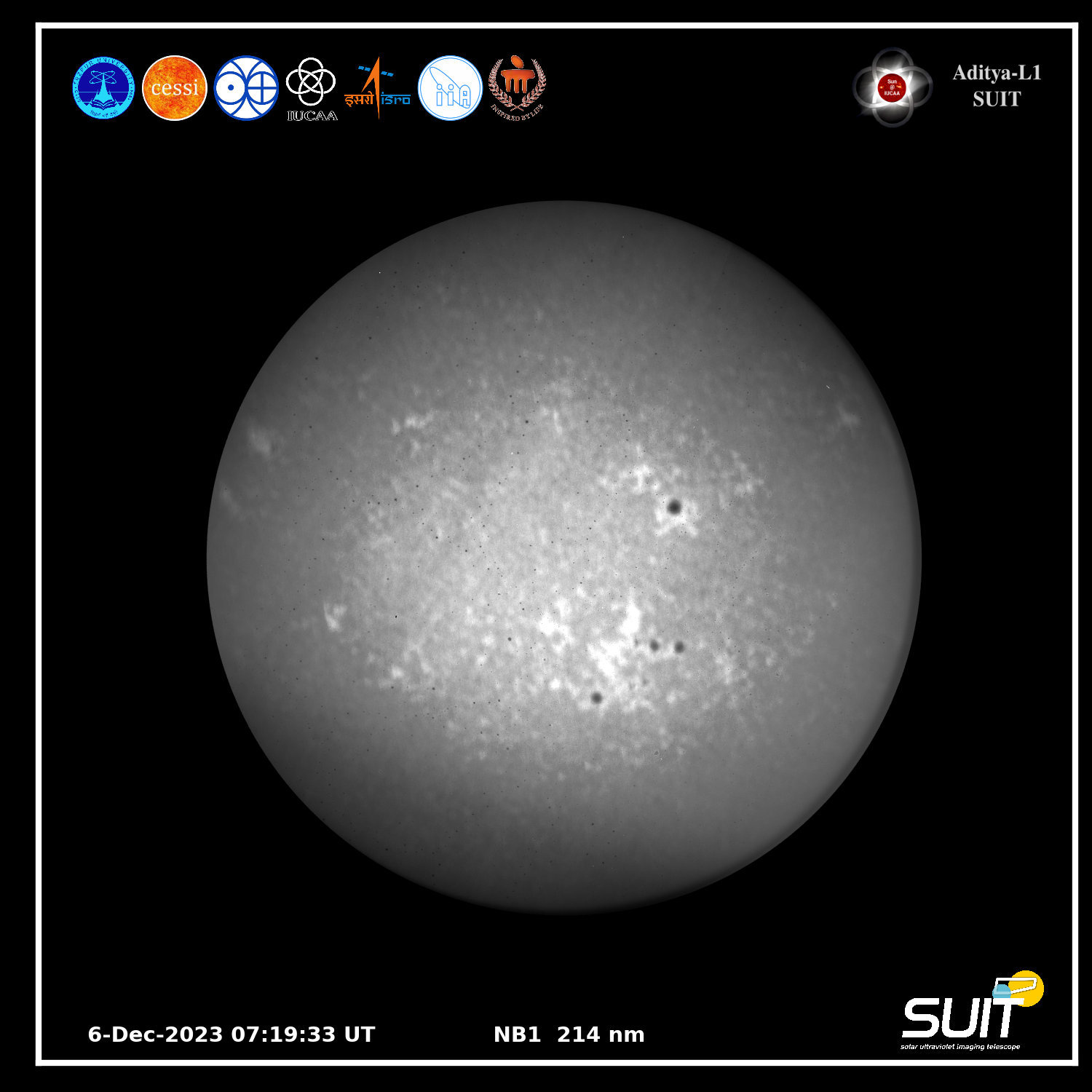
Image Source: ISRO
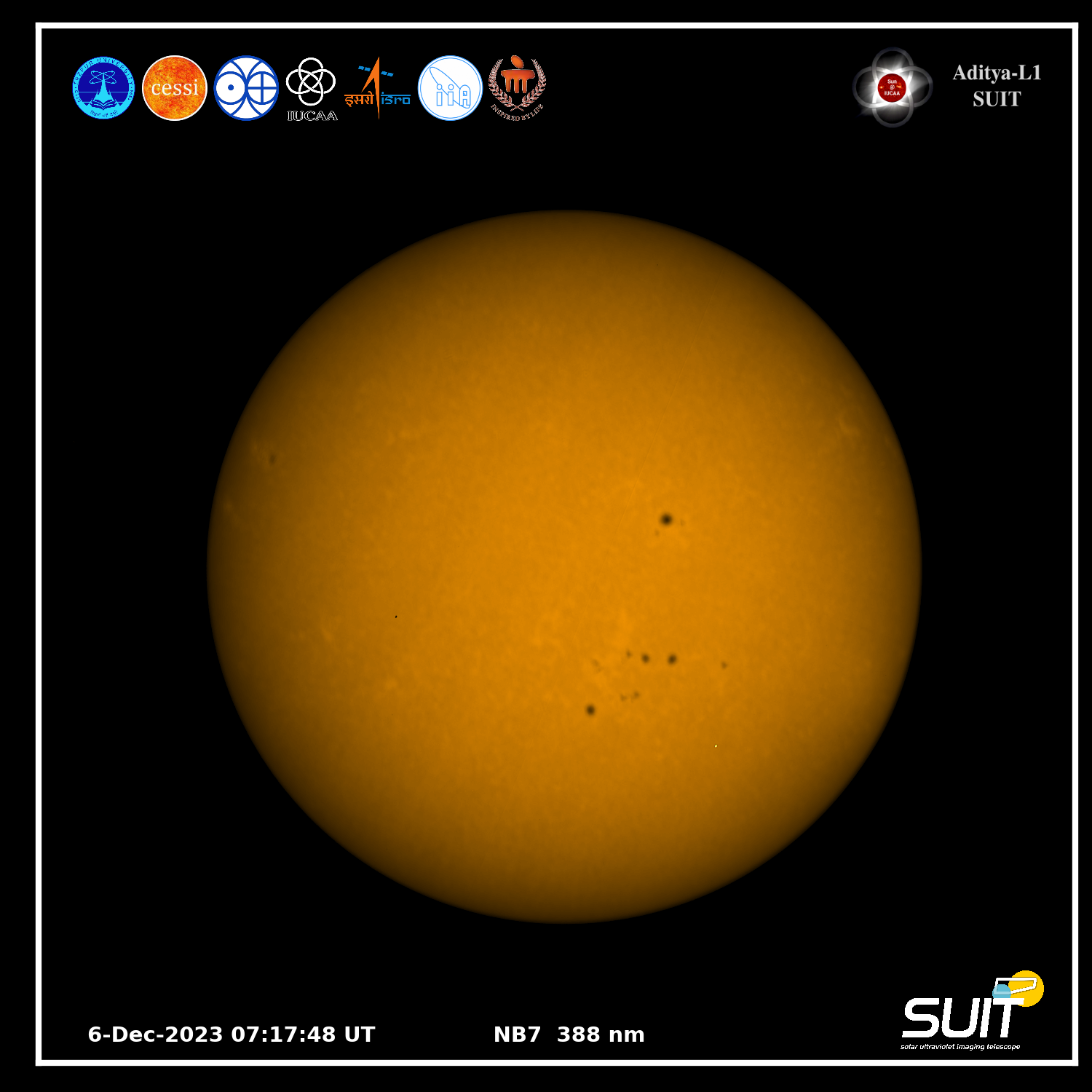
Image Source: ISRO
Designed with precision, these payloads serve a pivotal role in studying various layers of the Sun, ranging from the photosphere to the corona. Employing an array of electromagnetic, particle, and magnetic field detectors, Aditya-L1 seeks to unravel the mysteries surrounding our star's multifaceted existence.
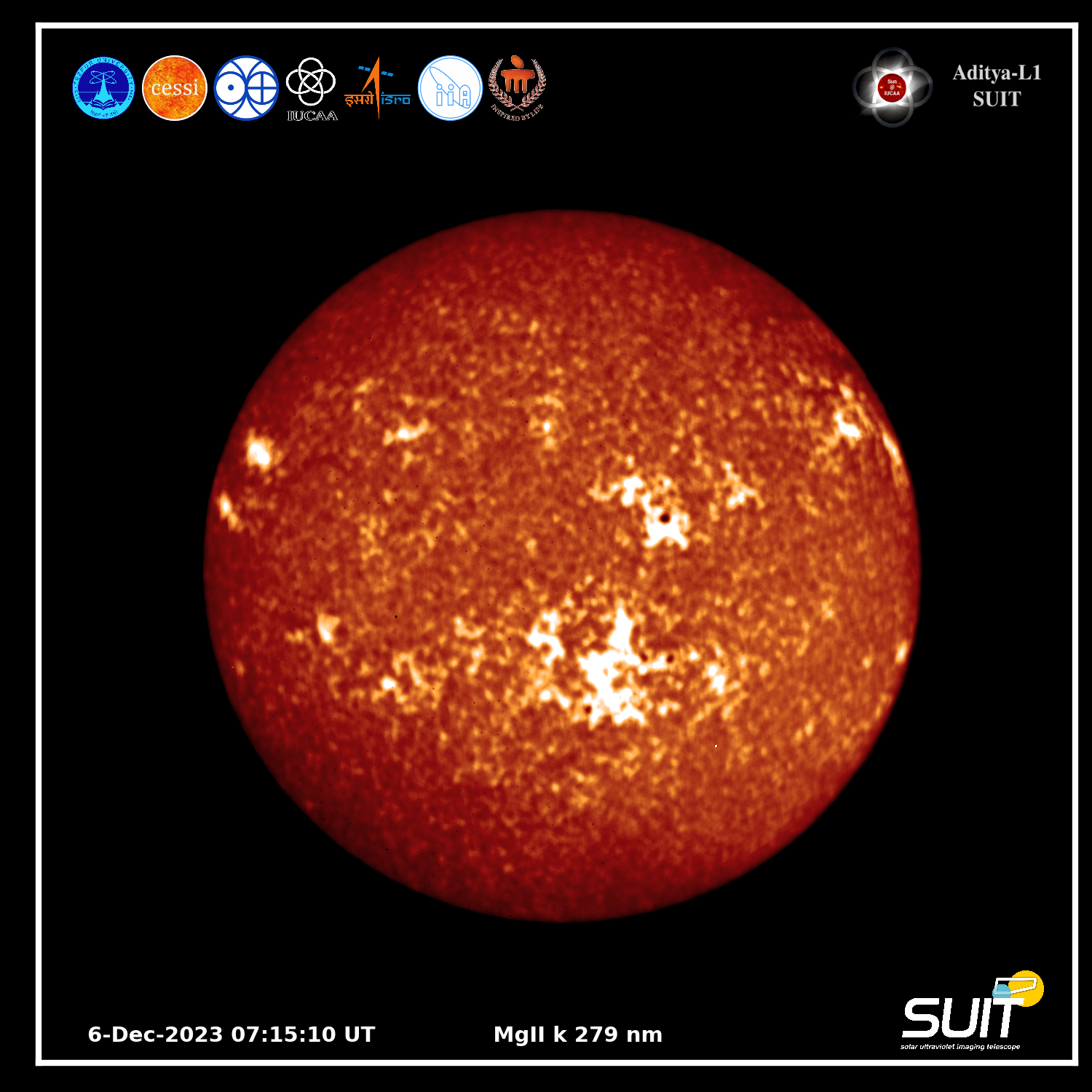
Image Source: ISRO
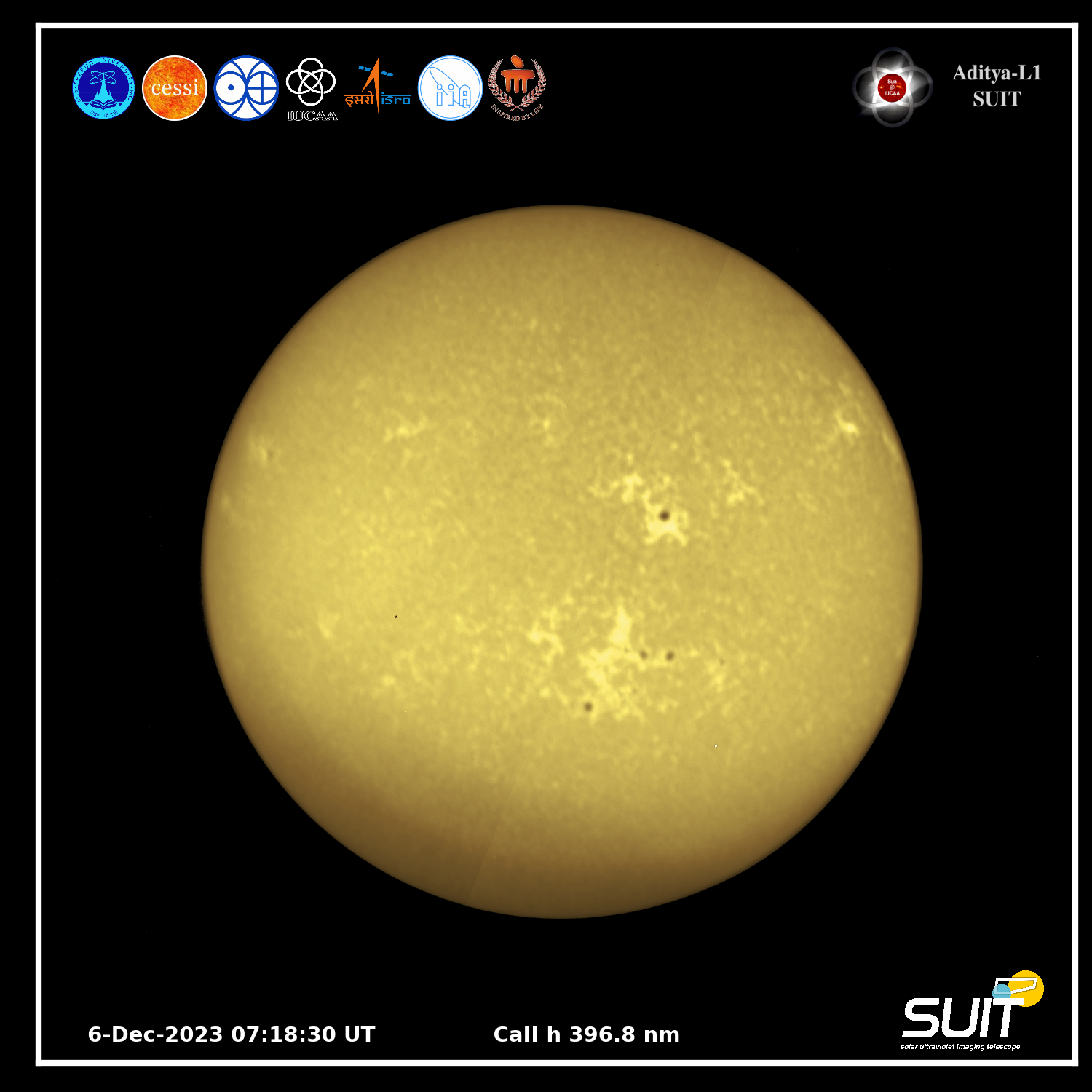
Image Source: ISRO
Scheduled to reach the advantageous L1 point in January 2024, Aditya-L1 will commence its mission orbiting around this strategic location, positioned approximately 1.5 million km from Earth. This irregular orbit marks a pioneering approach, offering an unrivalled vantage point for comprehensive solar observation. The L1 point, discovered by the esteemed mathematician Joseph Louis Lagrange, serves as a pivotal setting for Aditya-L1’s quest to explore and comprehend the Sun's secrets.
(With inputs from agencies)
© Copyright 2023. All Rights Reserved Powered by Vygr Media.

